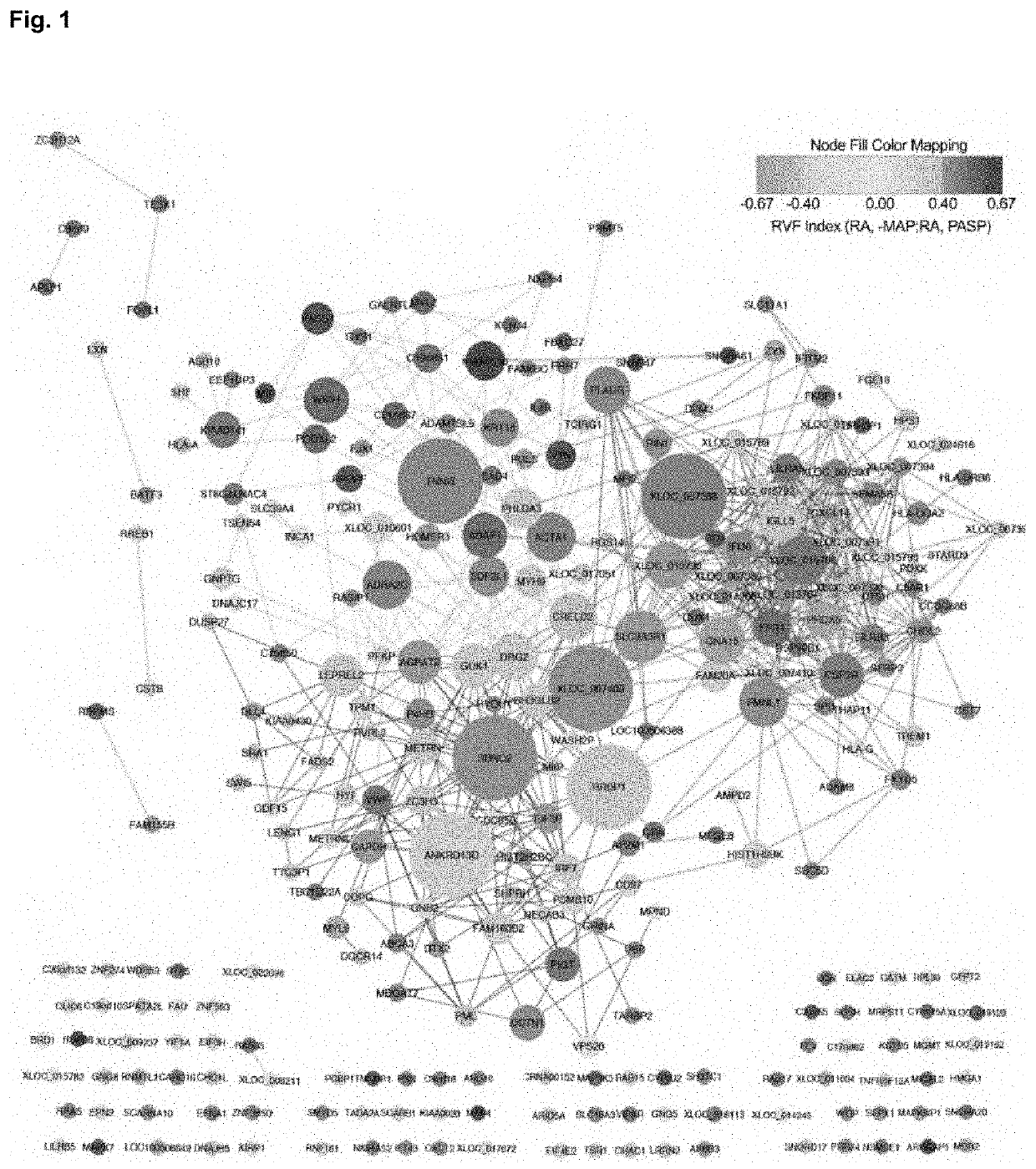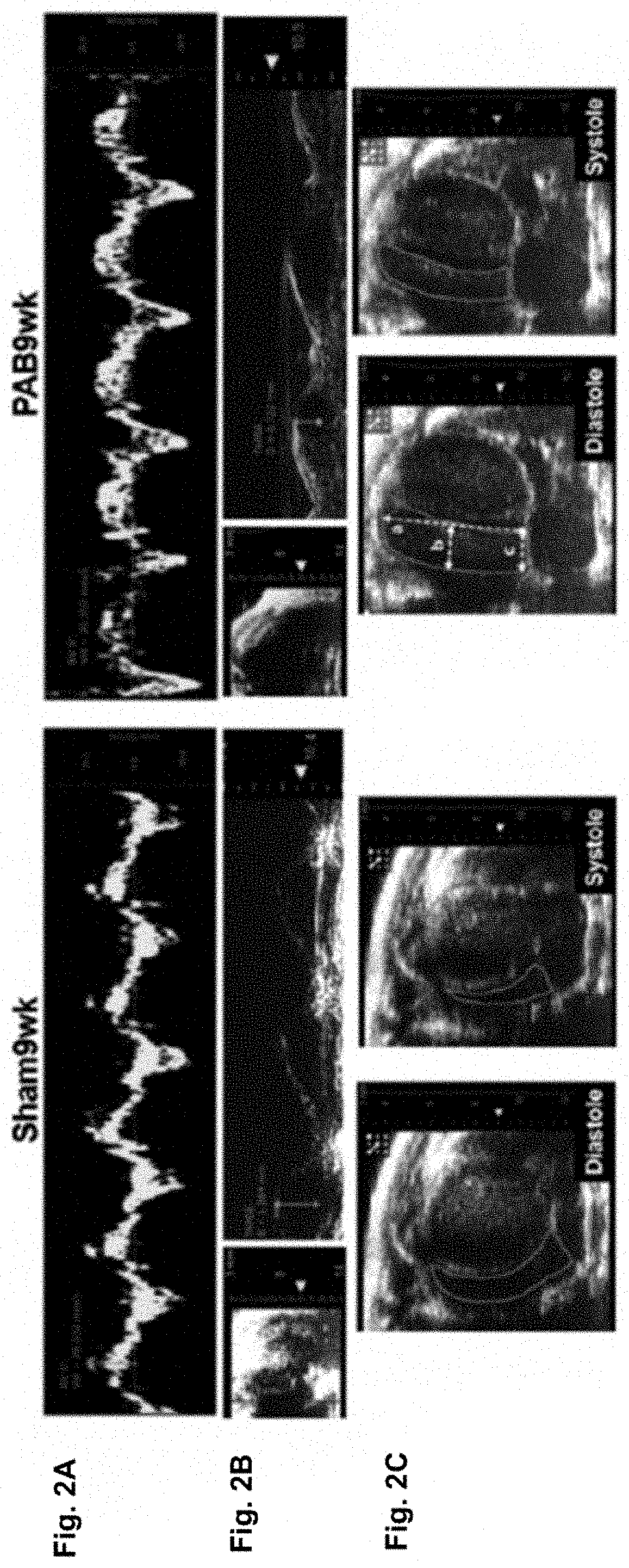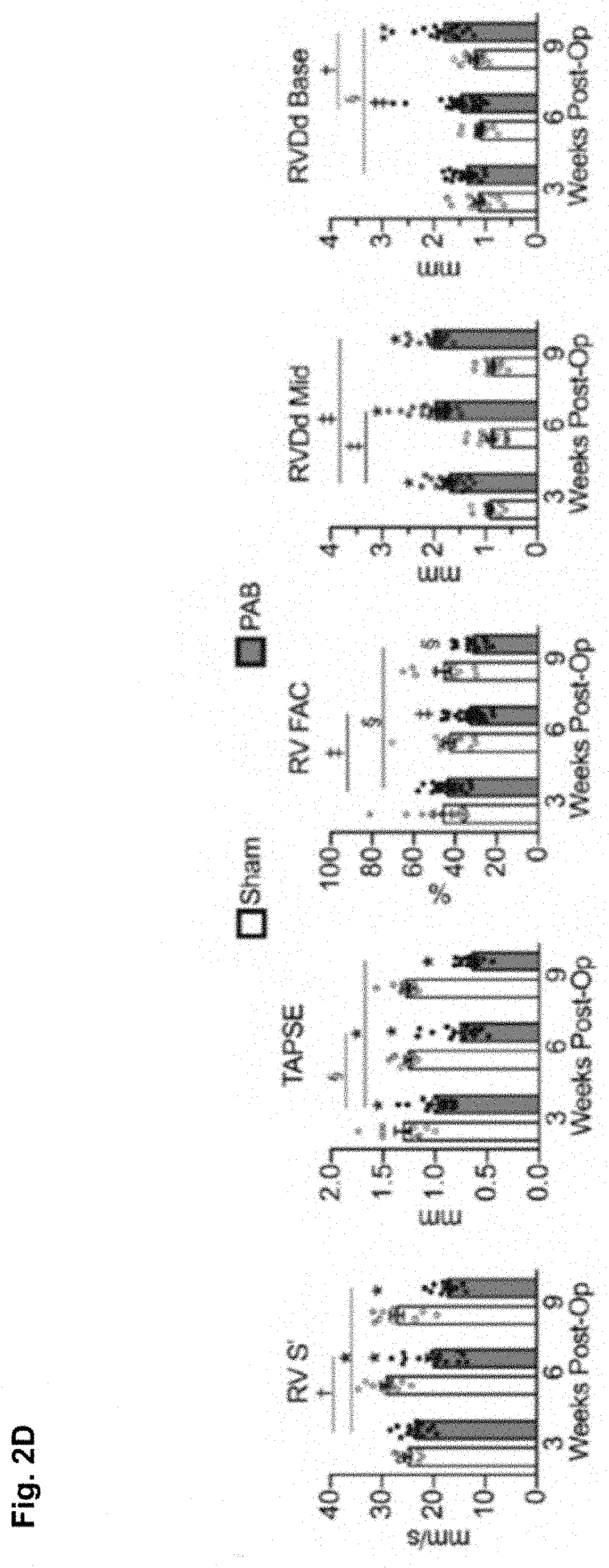Pharmacologic treatment for right ventricular failure
- Summary
- Abstract
- Description
- Claims
- Application Information
AI Technical Summary
Benefits of technology
Problems solved by technology
Method used
Image
Examples
example 1
Methods and Materials
Study Design
[0098]The goal of this study was to identify unique genetic determinants of RV failure that might be targeted for the development of novel RVF-specific therapy. Towards this end, we leveraged transcriptomic data from human ventricular tissue of advanced heart failure patients with versus without hemodynamically significant RV failure (and thereby biventricular HF) as well as that from non-failing donors (n=5 patients per group). Using WGCNA, module-trait analysis, and subsequent gene-phenotype correlations, we identified genes likely to mediate RVF. We experimentally validated some of the candidate RVF-associated genes in mouse models of pressure-overload induced RV versus LV failure. We subsequently focused our attention on the genetic hub Wipi1 which was upregulated in the failing RV of human patients and mouse models and also correlated with other identified RVF-associated genetic drivers. To elucidate possible pathophysiological mechanism of Wipi...
example 2
Clinical and Hemodynamic Characteristics of Advanced Heart Failure Patients
[0123]Clinical characteristics of advanced HFrEF patients without RVF and thereby with LV failure alone (LV-HF), advanced HFrEF patients with RVF and thereby biventricular failure (BiV-HF), and non-failing (NF) adult patients are listed in Table 3. The median (interquartile range) age was 61.5 (60.0-63.5) yrs for all advanced HF patients and 51.0 (43.0-52.0) yrs for non-failing donors. There was no significant difference in age between LV-HF and BiV-HF patients. As would be expected, BiV-HF patients had higher rates of inotropic medication use, lower rates of β-blocker use, lower LVEF, and worse hemodynamic indices of RV function than LV-HF patients (Tables 3 and 4). Specifically, BiV-HF patients had markedly elevated right atrial pressure (RAP), increased ratio of right atrial pressure to pulmonary capillary wedge pressure (RA:PCWP), lower systolic and mean arterial blood pressure (SBP and MAP, respectively)...
example 3
Transcriptomic Analysis Identifies a Gene Module Uniquely Associated with RVF
[0124]We used WGCNA to identify genetic pathways and groups of genes that distinguish the RV from the whole heart (Langfelder and Horvath, 2008). Using only genes that were expressed (average FPKM>1) and variable (coefficient of variation >10% across all cohorts) in the RV, we partitioned 13,613 transcripts into 23 RV-derived gene modules (FIGS. 10A and 10B). Each module was defined by a tighter clustering coefficient compared to the network as a whole. We examined the correlation of the eigengene for each of the 23 RV-derived network modules with hemodynamic indices of RVF. Consequently, we identified one module that correlated significantly with elevated RAP, elevated RA:PCWP, decreased SBP, and decreased CI (FIG. 10C). This RV-derived, RVF-associated module contained 279 transcripts, of which 245 were protein-coding genes, 30 were novel transcripts, and 4 were non-coding RNAs (1 long intergenic non-codin...
PUM
| Property | Measurement | Unit |
|---|---|---|
| Volume | aaaaa | aaaaa |
| Fraction | aaaaa | aaaaa |
| Cell viability | aaaaa | aaaaa |
Abstract
Description
Claims
Application Information
 Login to View More
Login to View More - R&D
- Intellectual Property
- Life Sciences
- Materials
- Tech Scout
- Unparalleled Data Quality
- Higher Quality Content
- 60% Fewer Hallucinations
Browse by: Latest US Patents, China's latest patents, Technical Efficacy Thesaurus, Application Domain, Technology Topic, Popular Technical Reports.
© 2025 PatSnap. All rights reserved.Legal|Privacy policy|Modern Slavery Act Transparency Statement|Sitemap|About US| Contact US: help@patsnap.com



